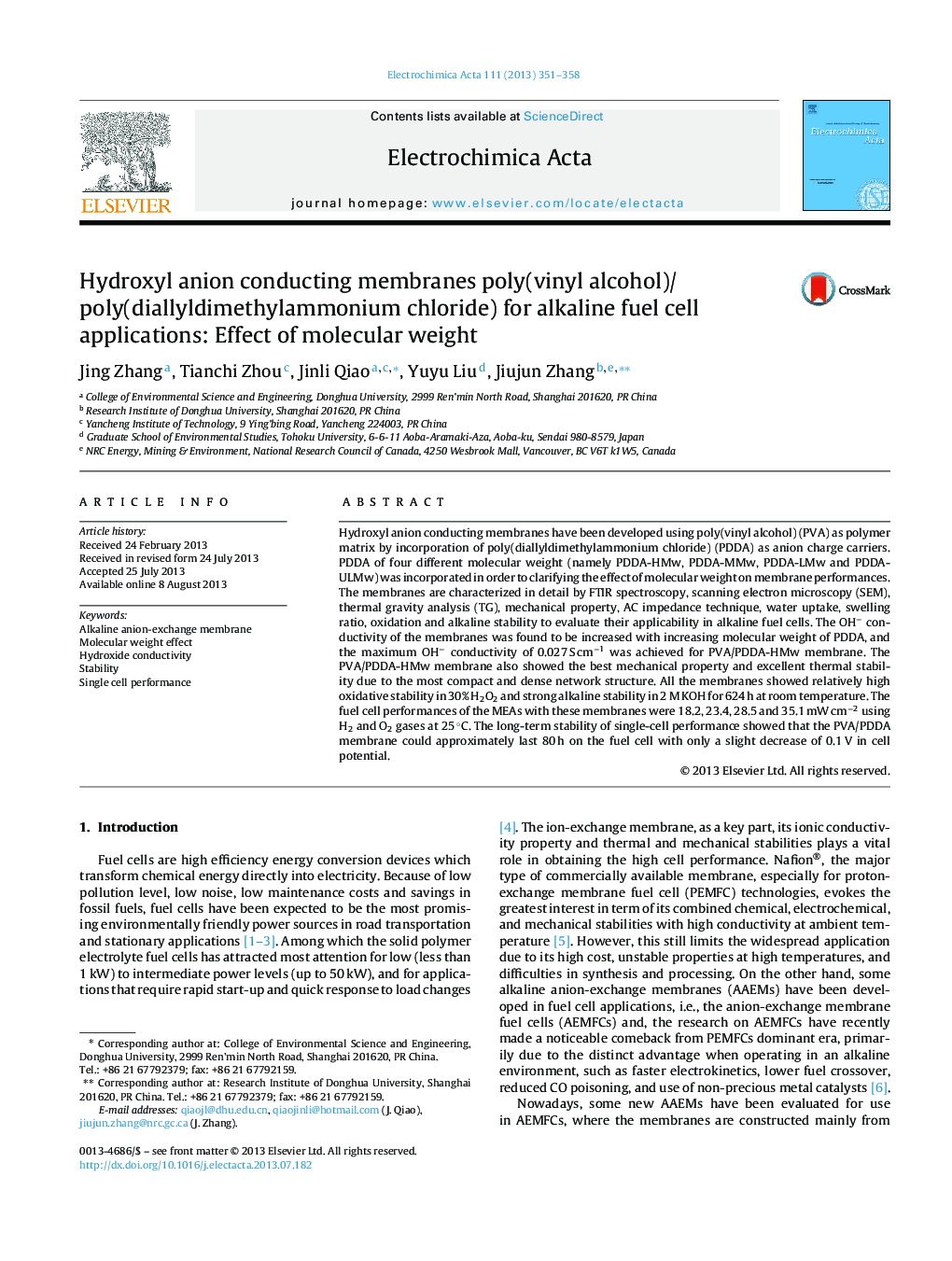| Article ID | Journal | Published Year | Pages | File Type |
|---|---|---|---|---|
| 186636 | Electrochimica Acta | 2013 | 8 Pages |
Hydroxyl anion conducting membranes have been developed using poly(vinyl alcohol) (PVA) as polymer matrix by incorporation of poly(diallyldimethylammonium chloride) (PDDA) as anion charge carriers. PDDA of four different molecular weight (namely PDDA-HMw, PDDA-MMw, PDDA-LMw and PDDA-ULMw) was incorporated in order to clarifying the effect of molecular weight on membrane performances. The membranes are characterized in detail by FTIR spectroscopy, scanning electron microscopy (SEM), thermal gravity analysis (TG), mechanical property, AC impedance technique, water uptake, swelling ratio, oxidation and alkaline stability to evaluate their applicability in alkaline fuel cells. The OH− conductivity of the membranes was found to be increased with increasing molecular weight of PDDA, and the maximum OH− conductivity of 0.027 S cm−1 was achieved for PVA/PDDA-HMw membrane. The PVA/PDDA-HMw membrane also showed the best mechanical property and excellent thermal stability due to the most compact and dense network structure. All the membranes showed relatively high oxidative stability in 30% H2O2 and strong alkaline stability in 2 M KOH for 624 h at room temperature. The fuel cell performances of the MEAs with these membranes were 18.2, 23.4, 28.5 and 35.1 mW cm−2 using H2 and O2 gases at 25 °C. The long-term stability of single-cell performance showed that the PVA/PDDA membrane could approximately last 80 h on the fuel cell with only a slight decrease of 0.1 V in cell potential.
